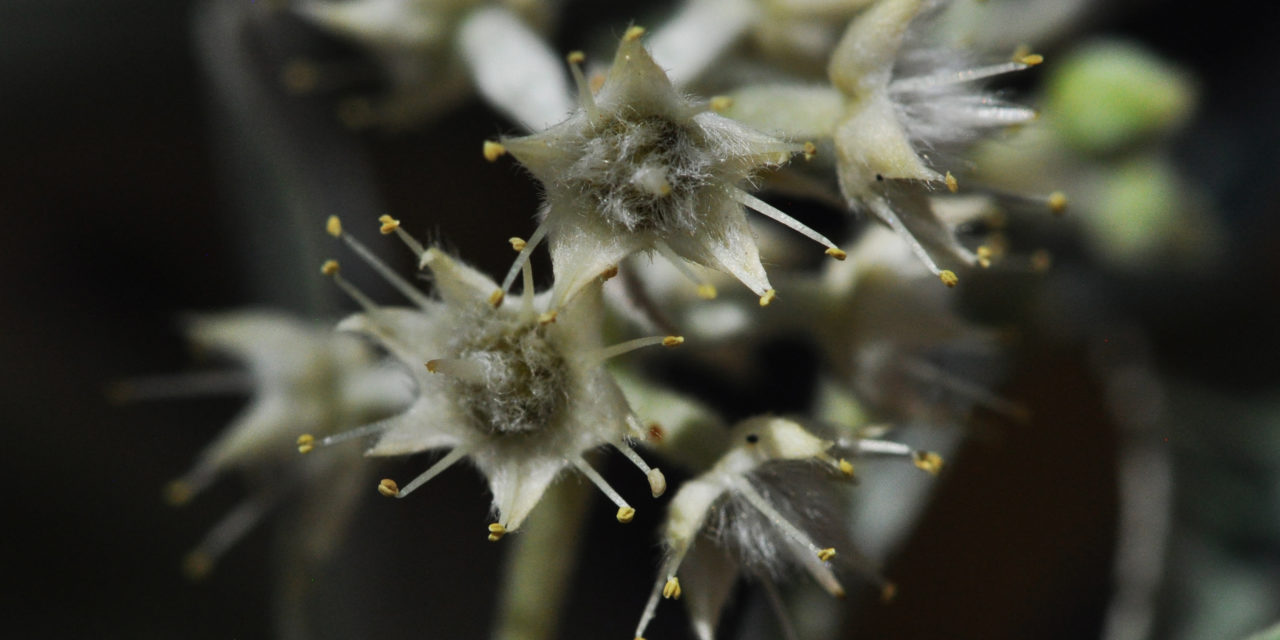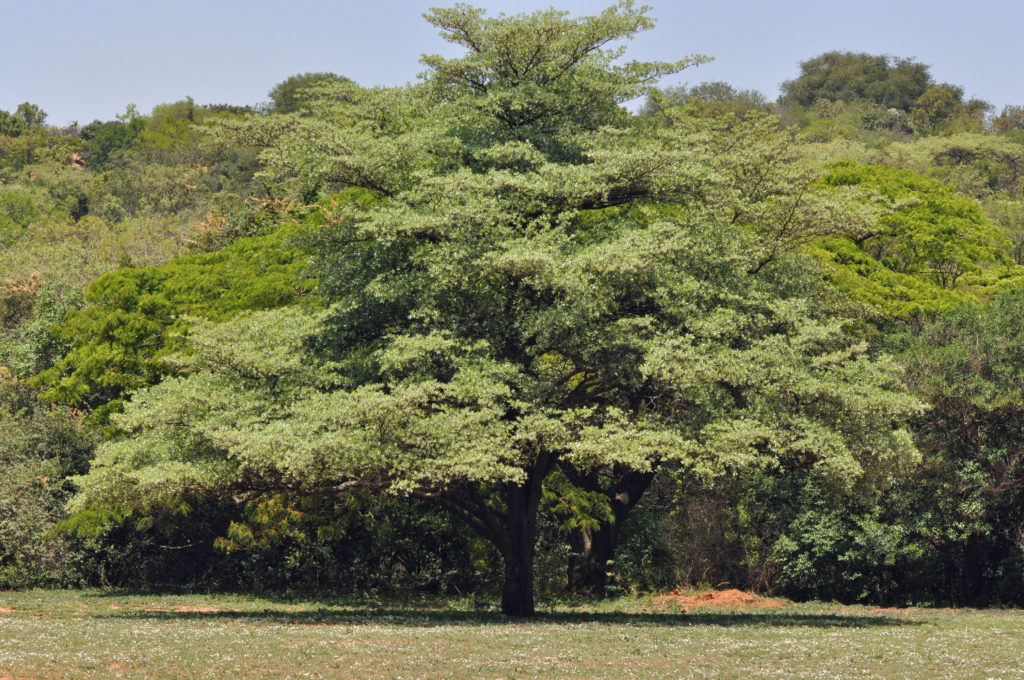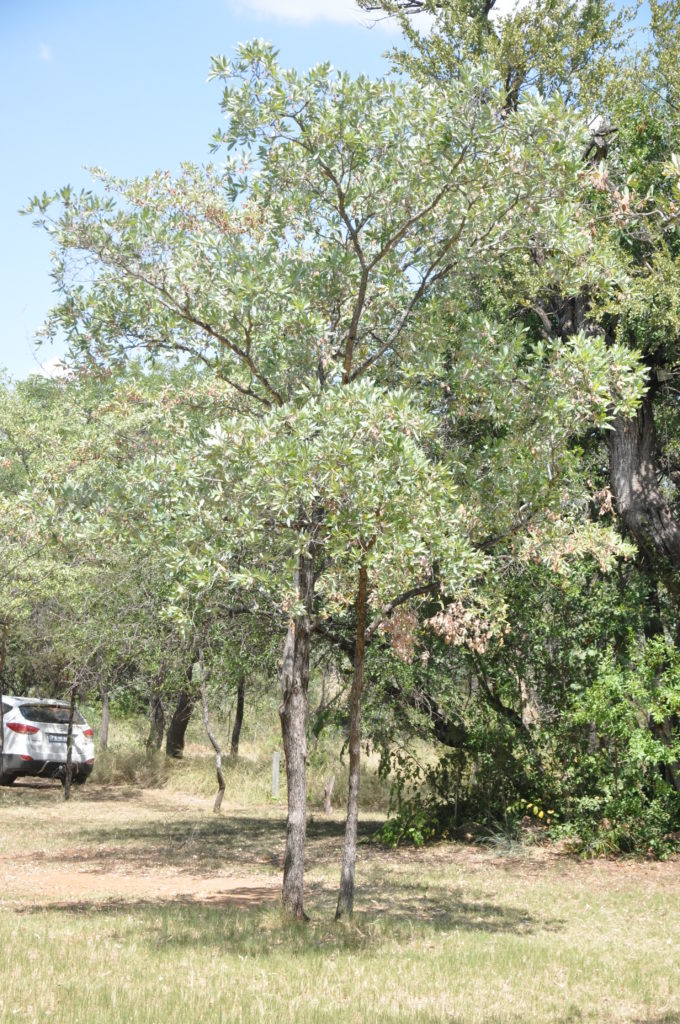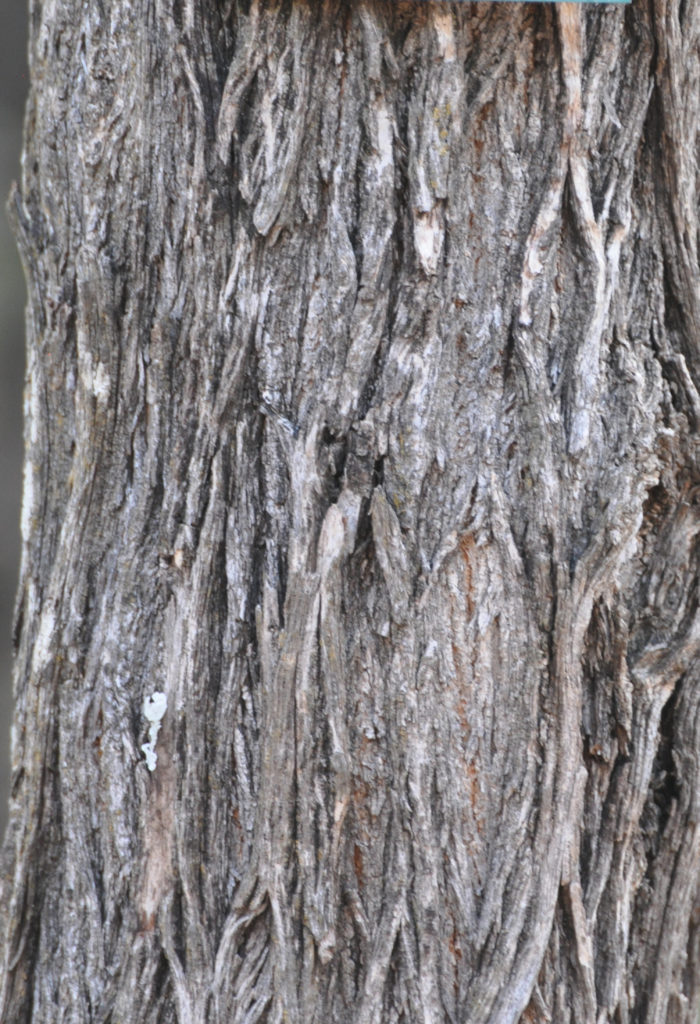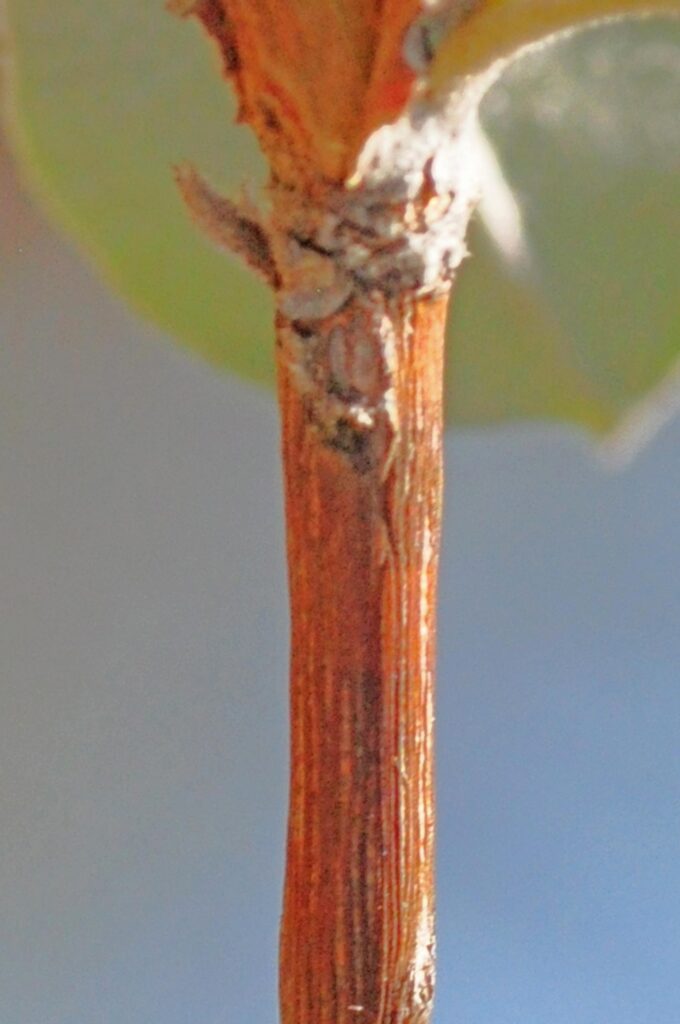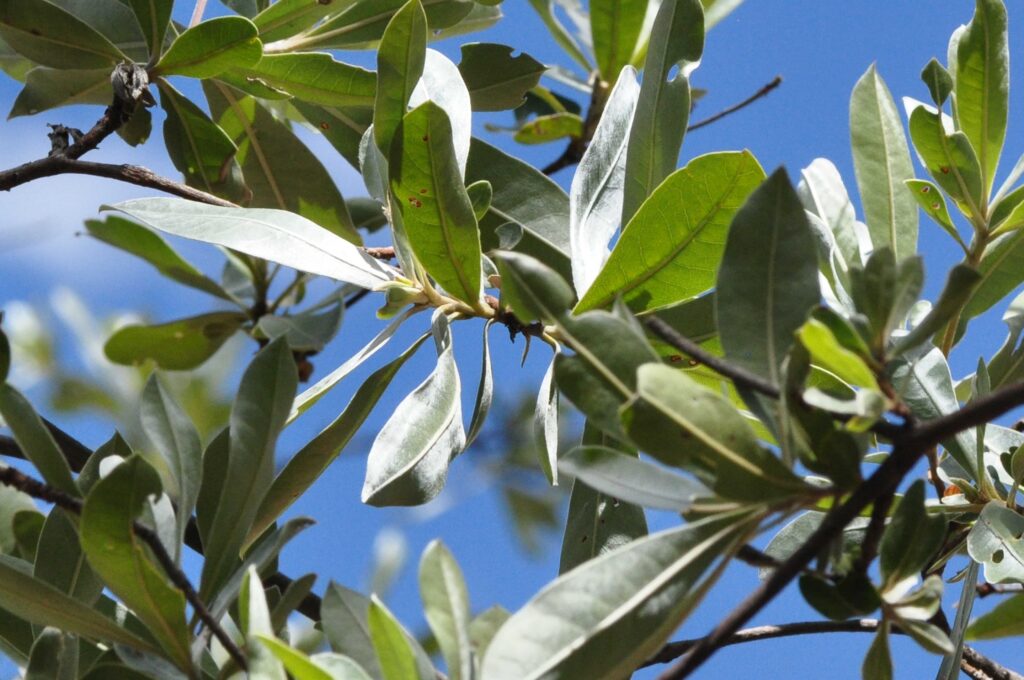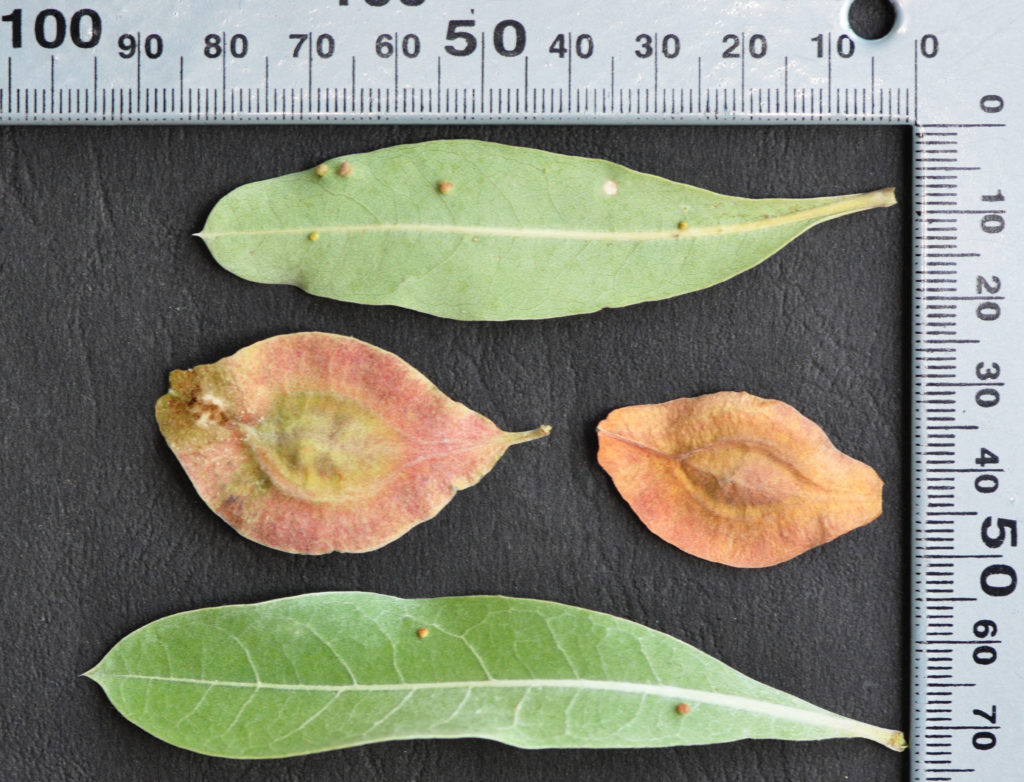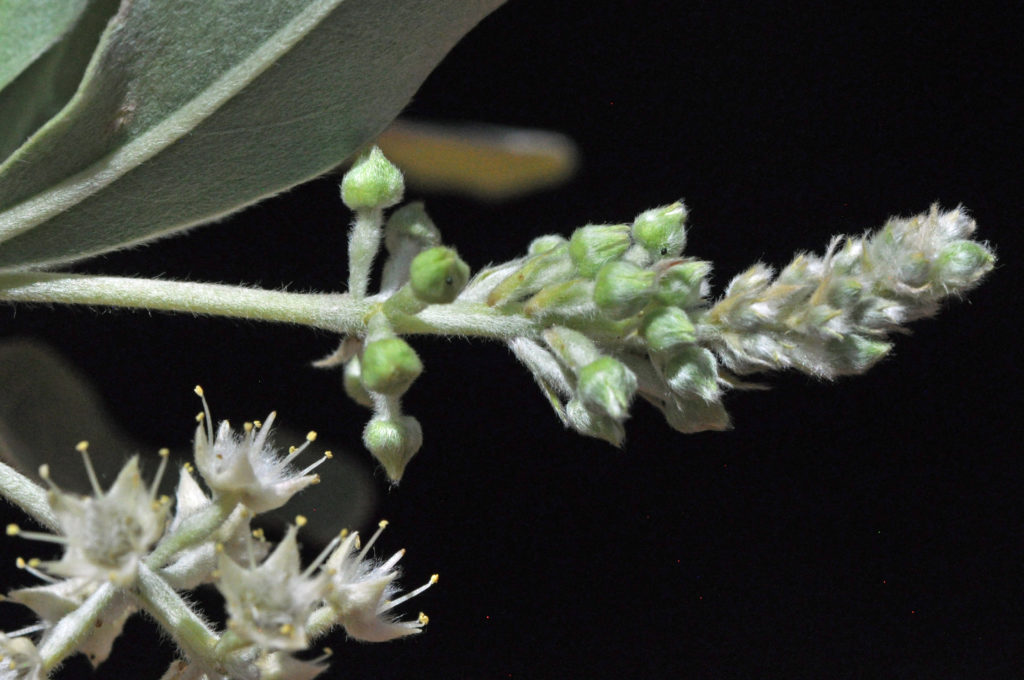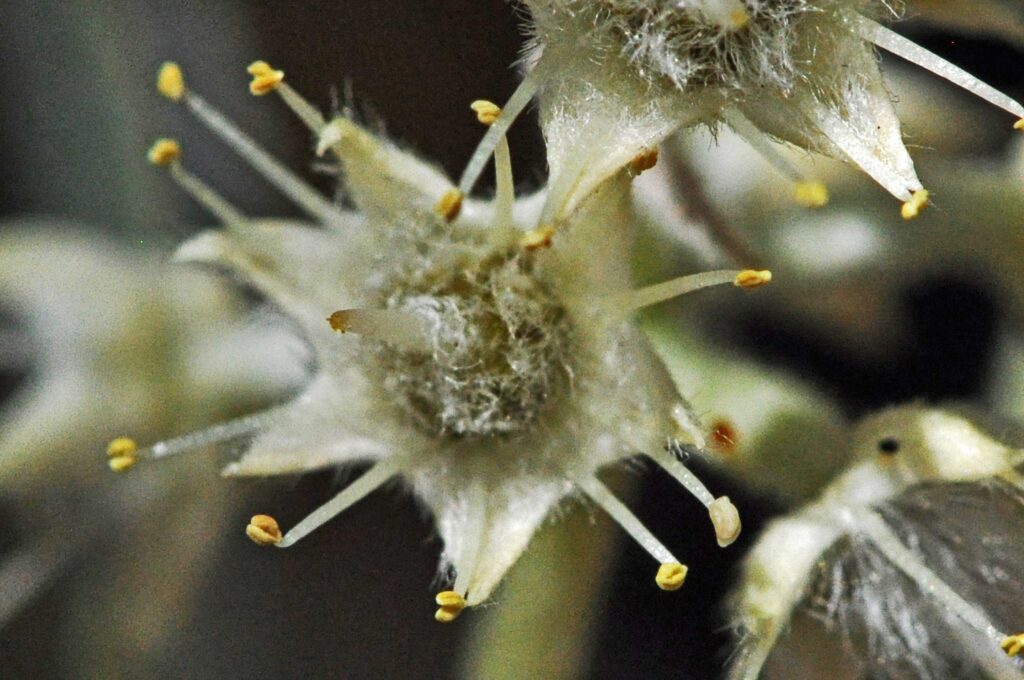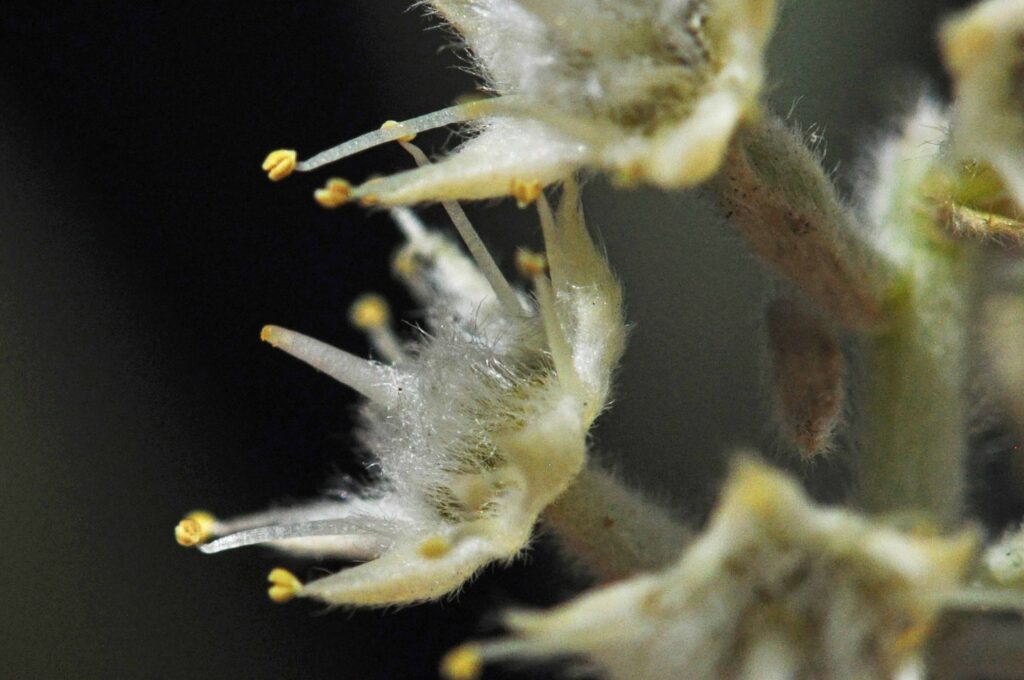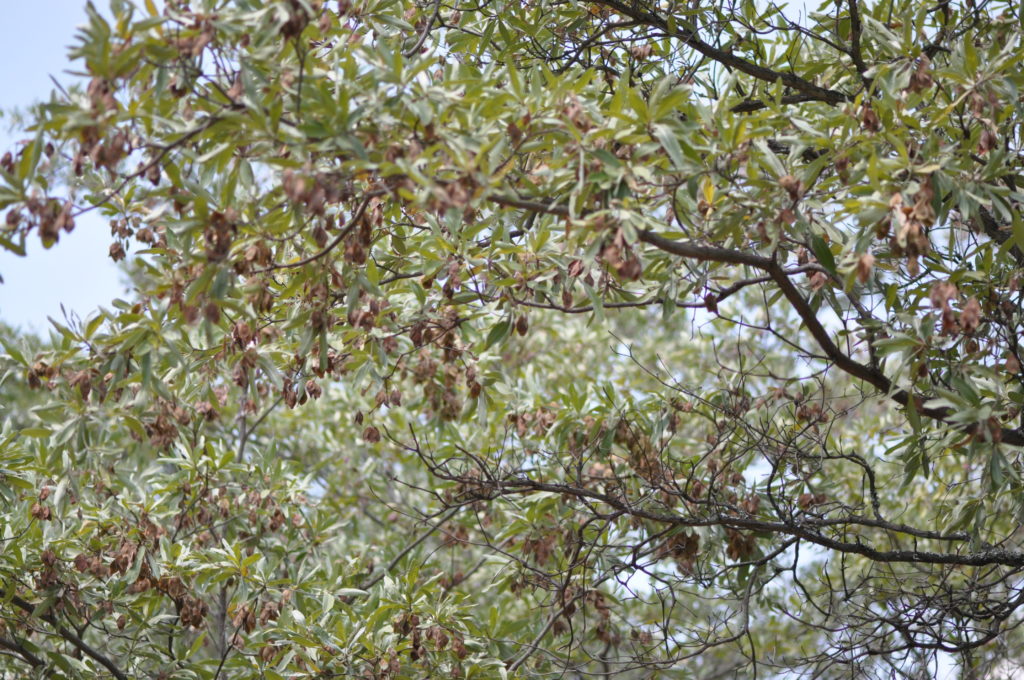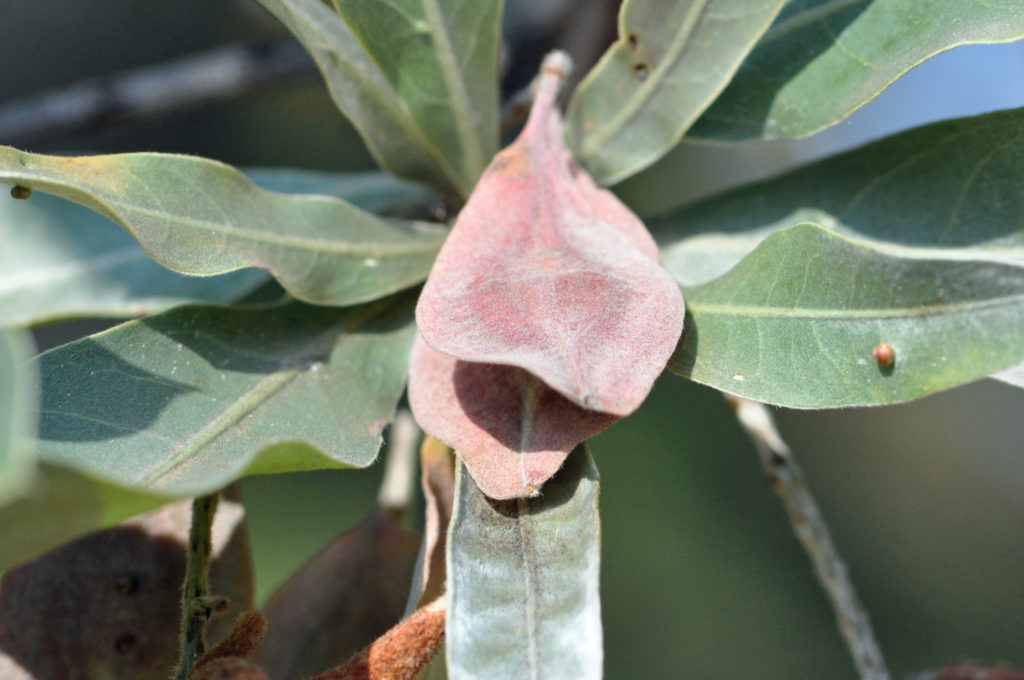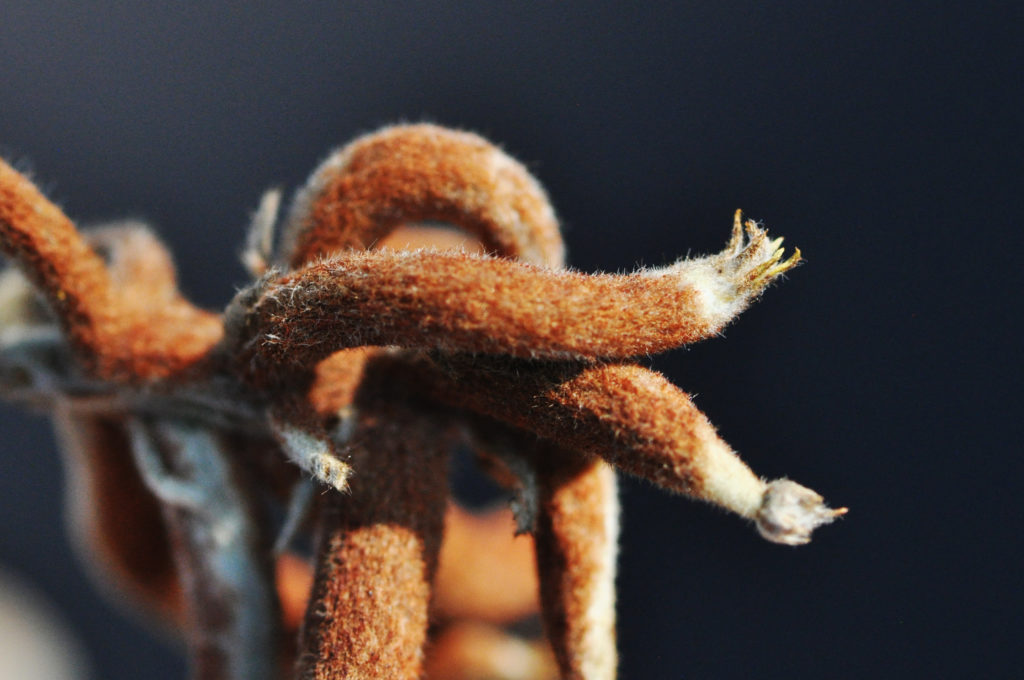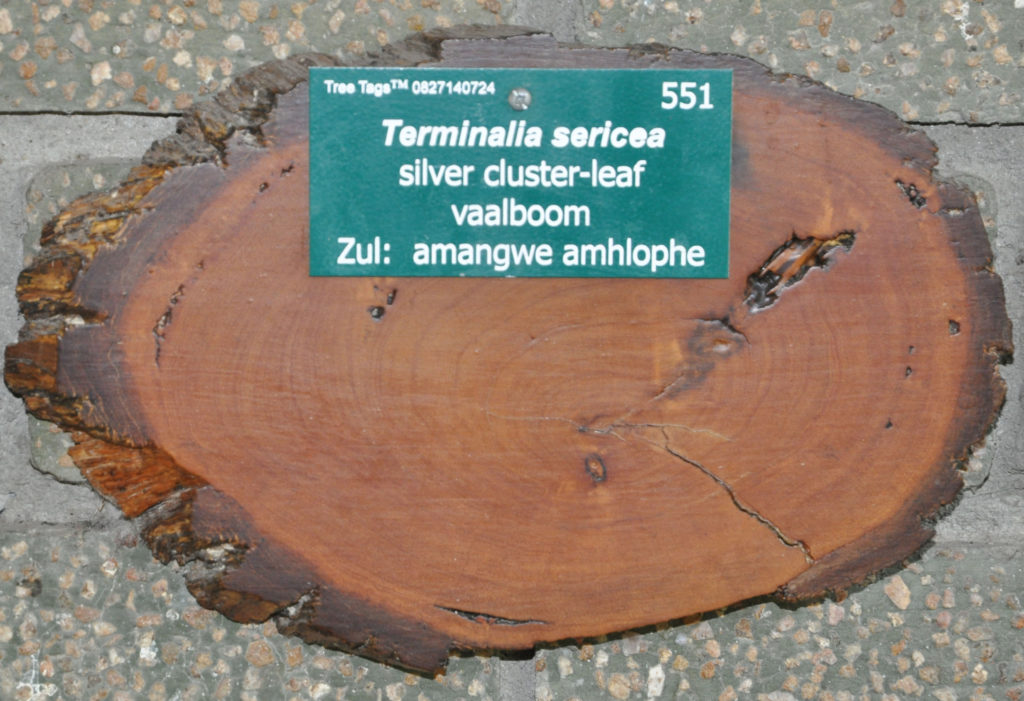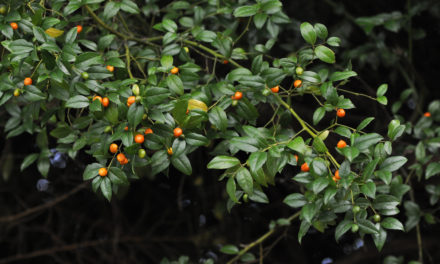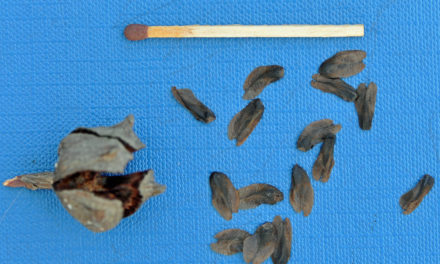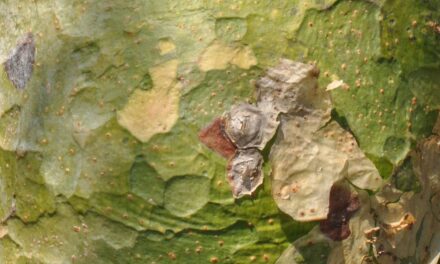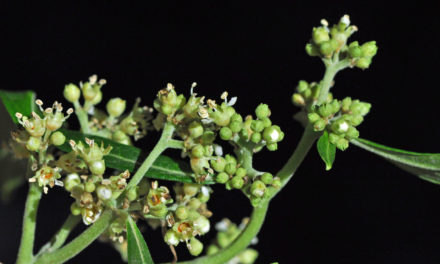General Info – summary
This spineless monoecious Tree ranges from 18m to 23m high. Deeply fissured bark has joins and splits. Attractive silvery foliage consists of simple shiny and entire Leaves. Whitish regular Flowers lack sepals and are in spikes – bisexual at the base & male near the apex. Petals absent, 10 exserted stamens. Female – single pistil and an inferior ovary. Fruit is a samara with a 2-winged, wind dispersed seed.
Description
Terminalia sericea
Previous Name: Terminalia velutina.
SA Tree No. 551.
Common names: (Afr) Bloubos, Bosvaalbos, Geelhout, Geelhoutboom, Sandgeelhout, Sandsalie, Sandvaalboom, Sandvaalbos, Silwerboom, Vaalboom, Vaalbos. (Eng) Assegai wood, Clusterleaf, Sand Yellow Wood, Silver Cluster-leaf, Silver Terminalia, Silver Tree Terminalia, Transvaal Silver Leaf, Transvaal Silver Tree, Wild Quince, Yellow Wood. (IsiNdebele) Mangwe. (isiZulu) Amangwe-amhlope, Umangwe, Umkhonono. (Northern Sotho) Mogonono, Moxonono. (Setswana) Mogonono. (siSwati) umhhonona, Umhonono. (Tshivenda) Mususu. (Xitsonga) Ankonono, Nkonola.
Family: Combretaceae (Bushwlillow family). In this family, there are about 16 genera, which contain about 530 species. In South Africa, there are 5 genera and 41 species. Here the genera with Trees include Combretum, Lumnitzera, Pteleopsis and Terminalia. The simple and usually entire Leaves lack stipules. Flowers are usually bisexual. There are usually twice the number of stamens as sepals or petals. The inferior Ovary has 1 locule and usually only 1 of the ovules develops into a seed. Fruit is usually indehiscent and may be winged or ridged.
Name derivation: Terminalia – end: referring to the fact that leaves are clustered at the ends of shoots. sericea – clothed in silky hair – referring to the silky coloured leaves which are especially noticeable in sunlight.
Conservation: National Status: L C. (Least Concern). Assessed: 2005 (W. Foden and L. Potter).
Tree
This single stemmed erect Tree has a roundish spreading to flat-topped crown (photo 745) and is medium sized – usually up to 16m high. However, it may reach 23m. The single Trunk diameter is up to 46cm. The Bark is dark grey or brownish and longitudinally fissured with ridges that join and split (photo 155). On Young branches the peeling and flaking reveals a light brown underbark. The twigs (1-year-old current branch segments) are red-brown (photo 381) or purplish black and covered with silky hairs. Branches tend to be horizontally layered with slightly drooping ends (photo 745). There are no scales or stalked glands present. Round woody galls are often present. These parasitic galls (abnormal outgrowths of tissue caused by fungi, bacteria, insects or mites) are up to 3cm in diameter.
- 745. 2017/10/31. Pretoria NBG. Photo: David Becking.
- 89. 2015/03/17. Borakalola NP. Photo: David Becking.
- 155. 2014/04/17. Marakele NP. Photo: David Becking.
- 381. 2018/04/24. Nylsvley. Photo: David Becking.
Leaves
On this deciduous tree, the narrowly obovate to elliptic (photo 86) leaves tend to be concentrated towards the ends of thinnish branches. Each leaf is at least 3 times as long as wide (photo 86) and is up to 12 x 5cm. Silvery grey hairs are usually present. These cover the pale blue-green leaves and create the surface shine that becomes visible from a distance – especially on a sunny day (photo 178). This aids in the identification of this tree. Leaves may also be almost hairless and have no shine. The lower surface is a lighter colour. Between 8 and 16 pairs of not always clear lateral veins are present. The broadly tapering to rounded Apex may end in a sharp tip (photo 86) or is bluntly pointed to rounded. The Base gradually tapers and appears slightly decurrent (here the blade partially wraps around the Petiole (stalk that attaches the leaf blade to the stem). This petiole is up to 10mm long (usually shorter). Margins are occasionally wavy and are entire (with a continuous margin, not in any way indented).
- 178. 2014/02/17. Marakele NP. Photo: David Becking.
- 86 2015/03/17. Borakalola NP. Photo: David Becking.
Flowers
The inconspicuous very small Flowers are about 4mm wide. They are pale yellow to creamy white and borne at ends of branchlets (photo 741). Flowers are actinomorphic (Regular, symmetrical – are vertically divisible into similar halves by more than 1 plane passing through the axis). Some bisexual flowers are located at the base of the axillary Spike (simple indeterminate inflorescence with sessile flowers on a single unbranched stalk – photo 741) which is up to 7cm long. Some flowers may be male only and these occur towards the apex of the same spike. The Male flowers have stalks which resemble pedicels (flower stalks) but are in fact the lower receptacle with abortion of the inferior ovary. Flowers lack Petals and the Calyx forms a tube above the ovary (photo 741). The mouth of the tube is hairy (photo 733). The calyx is attached to the edges of the shallowly cup-shaped Receptacle (that expanded tip of the flower stalk from which the floral parts develop). The 10 Stamens are exserted (sticking out) and project beyond the sepals (photo 733). The Disc (a more or less fleshy or elevated development of the receptacle) is found between the stamens. In Bisexual flowers (photo 736) there is a single Pistil (a unit of the Gynoecium, the female element of the flower, composed of the Ovary, Style and Stigma) and the Ovary is completely inferior (one which is below the calyx). What appears to be pedicels in photo 741 are actually inferior ovaries. In photo 736, both the stamens and the single style are visible in the bisexual flower. Flowers have an unpleasant smell (for us), which suggests that pollination is by, or includes, flies. (Sep-Jan).
- 741. 2017/10/31. Pretoria NBG. Photo: David Becking.
- Pretoria
- 736. 2017/10/31. Pretoria NBG. Photo: David Becking.
Fruit
The centre of the oval, flattish, round-tipped Fruit is swollen round the seed. This pink mature fruit is a pseudocarp or samara (an indehiscent winged fruit), which contains a single central Seed. Fruit is up to 3,5-4,5cm and is attached by a short pedicel (having 1 stalk per flower) that is up to 5mm long. Unlike many Combretum species, the fruit has 2 not 4 thin Wings that surrounds each seed (photo 106). The Fruit is initially pink to red but darkens with age becoming reddish brown. The fruit, together with the leaves, may give the tree an attractive silver and pink colour. Short hairs may be present. The fruit may remain on the tree for an extended period of up to a year. They are finally wind dispersed. (Feb-May).
- 87. 2015/03/17. Borakalola NP. Photo: David Becking.
- 106. 2018/03/14. Pretoria NBG. Photo: David Becking.
Distribution & Ecology
Sandy bushveld (a sub-tropical mineral-rich woodland ecoregion of southern Africa) is the ideal environment for this tree. It also is found on the slopes of vleis (a vlei is a shallow, small, seasonal lake or pond or marshy wetland). These trees often occur in deep sandy soil and may be the dominant or co-dominant tree e.g. with Brachystegia, Colophospermum mopane, Combretum or “Acacia” forest. This plant is often an early pioneer (hardy species which are the first to colonize new or previously disturbed areas). Location: KwaZulu-Natal, Northern Cape but not in the central Kalahari. They also occur in Mpumalanga e.g. Kruger National Park, Gauteng, Limpopo, and North West e.g. Hartbeestpoort dam area. Beyond South Africa, they occur in Swaziland, Botswana, Namibia, widespread in Mozambique, Zimbabwe, Angola, DRC and Tanzania. When the sun is shining, a group of trees may appear as a silvery wood. Antelope browse fallen Leaves while both elephant and giraffe consume the attached leaves. The leaf nutritional value is reported to be low. Leaves are the larval food for a number of butterflies – including the fast, low flying and continuously breeding Guineafowl butterfly (Hamanumida daedalus). This medium sized butterfly is internally grey with white spots – similar to guineafowl feathers. This butterfly also feeds on the leaves of Combretum species including Combretum mollie. The larvae of the moth Laeliopsis punctuligera also feeds on this plant. Fruits may become parasitized, twisted and hairy (photo 107).
- 107. 2018/03/14. Pretoria NBG. Photo: David Becking.
Ethnobotany
Cattle browse the dry Leaves especially in times of need. Tswana people use the silvery leaf hairs to glaze their pottery. Roots may be poisonous. When properly seasoned, the hard oily Wood is yellowish, close-grained, strong and elastic as well as being termite and borer proof. It is oily and makes good fence posts and furniture. Wood is used for construction of hoe-handles, bows and huts and makes a good fuel – including charcoal. In KwaZulu-Natal the odourless wood is used for curing the fruit of Strychnos madagascariensis. The Bark is rich in tannin and is used for tanning, providing a yellow colour. Stripped bark is also used for making rope. Trees yield an edible Gum. It is a difficult tree to Grow – especially in heavy soil. Established plants are drought resistant and can withstand some frost. However, young plants should be protected from frost. Germination rate is low but, once established, the tree grows relatively quickly in sunny places. This tree can also form dense thickets when cut or burnt, and may become weedy. Local medicine makes use of parts of this tree.
- 180 2019.08.13 Skukuza KNP nursery Photo: David Becking.
References
Boon, R. 2010. Pooley’s Trees of eastern South Africa. Flora and Fauna Publications Trust, Durban.
Burrows, J.E., Burrows, S.M., Lotter, M.C. & Schmidt, E. 2018. Trees and Shrubs Mozambique. Publishing Print Matters (Pty) Ltd. Noordhoek, Cape Town.
Coates Palgrave, M. 2002. Keith Coates Palgrave Trees of Southern Africa, edn 3. Struik, Cape Town.
Foden, W. & Potter, L. 2005. Terminalia sericea Burch. ex DC. National Assessment: Red List of South African Plants version 2020.1. Accessed on 2024/02/15.
Lawrence, G. H. M, 1951. Taxonomy of Vascular Plants. The Macmillan Company, New York. Tenth Printing 1965.
Palmer, E. & Pitman, N. 1972. Trees of southern Africa. Balkema, Amsterdam, Cape Town.
Schmidt, S. Lotter, M. & McCleland, W. 2002. Trees and Shrubs of Mpumalanga and the Kruger National Park. Jacana, Johannesburg.
van Wyk, B. & van Wyk, P. 1997 Field guide to Trees of Southern Africa. Struik, Cape Town.
Woodhall, S. 2020. Field Guide to Butterflies of South Africa, edn 2. Donnelley, RR, China.
http://www.plantzafrica.com/planttuv/terminaliasericea.htm
https://en.wikipedia.org/wiki/Terminalia_sericea
http://www.fao.org/docrep/x5327e/x5327e1o.htm
http://www.zimbabweflora.co.zw/speciesdata/species.php?species_id=142210
http://www.worldagroforestry.org/treedb2/AFTPDFS/Terminalia_sericea.PDF

